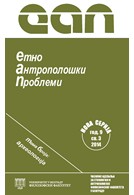Muzejski kurs i arheologija tokom II svetskog rata u Beogradu
Museum Course and Archaeology in Belgrade during the World War II
Author(s): Aleksandar BandovićSubject(s): Archaeology, Museology & Heritage Studies
Published by: Филозофски факултет, Универзитет у Београду
Keywords: history of archaeology; museum course; Museum of Prince Paul; archaeology during occupation; Ahnenerbe; Miodrag Grbić
Summary/Abstract: The museum course in the Museum of Prince Paul in Belgrade lasted from 1942 to 1944, initiated by Miodrag Grbić, one of the curators of the Museum. The whole generation of the post-war archaeologists, art historians, and architects stemmed from the lectures of Miodrag Grbić, Đorđe Mano Zisi, Milan Kašanin and Ivan Zdravković. The course became the turning point in the history of archaeology, a sort of parallel university in the occupied city. However, it should not be valorised isolated from other events in Belgrade during the World War II. The German authorities established new institutions in charge of heritage protection in the occupied Serbia – Kunst und Denkmalschutz, the department chaired by Baron Johann von Reiswitz. Himmler’s organization Ahnenerbe was also active in the region of Belgrade and Serbia. As part of its activities, Wilhelm Unverzagt, the director of the Berlin museum conducted the excavations at Kalemegdan. These excavations symbolically legitimized the German presence in Belgrade. On the other hand, the project became one of the topoi of the ideology of collaborationism. The students of the museum course acquired their practical training during these excavations.
Journal: Етноантрополошки проблеми
- Issue Year: 9/2014
- Issue No: 3
- Page Range: 625-645
- Page Count: 22
- Language: Serbian

